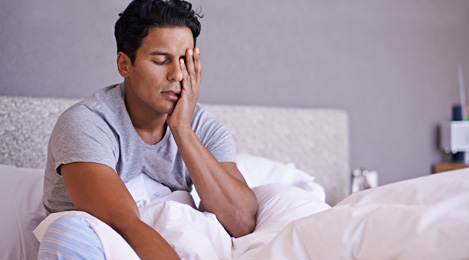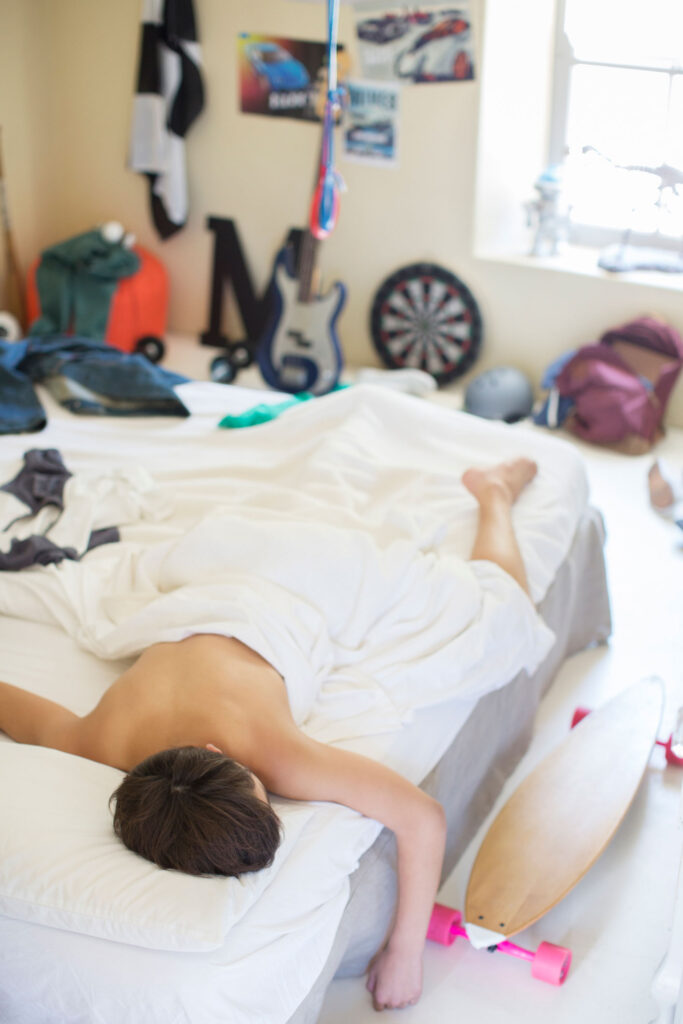Kleine-Levin syndrome
including menstrual-related hypersomnia

including menstrual-related hypersomnia
 Kleine-Levin syndrome (KLS) is a rare hypersomnia sleep disorder of the brain (neurologic disorder). Researchers don’t yet know the cause of KLS, but it affects the brain’s ability to control sleep, wakefulness, thinking, and behaviors. KLS causes repeated episodes (periods) of very long sleep (often 16 to 20 hours a day) and excessive daytime sleepiness (EDS). EDS is a strong daytime sleepiness or need to sleep during the day, even with enough sleep the night before.
Kleine-Levin syndrome (KLS) is a rare hypersomnia sleep disorder of the brain (neurologic disorder). Researchers don’t yet know the cause of KLS, but it affects the brain’s ability to control sleep, wakefulness, thinking, and behaviors. KLS causes repeated episodes (periods) of very long sleep (often 16 to 20 hours a day) and excessive daytime sleepiness (EDS). EDS is a strong daytime sleepiness or need to sleep during the day, even with enough sleep the night before.
KLS episodes may last for days or weeks at a time. During episodes, people who have KLS have other symptoms, such as:
They may also eat much more than they normally do and do things they wouldn’t usually do. However, all these symptoms usually go away between episodes.
Jump to page sections
You don’t need to have all of these symptoms to be diagnosed with KLS, but you’ll have at least some of them.
 Symptoms most often start in adolescence or young adulthood, between 12 and 20 years of age. They can start later, but this is rare.
Symptoms most often start in adolescence or young adulthood, between 12 and 20 years of age. They can start later, but this is rare.
An episode of KLS (excessive daytime sleepiness, sleeping for long times, and other KLS symptoms) can last from 2 days to several weeks. Episodes usually happen every few months.
If you have KLS, you may have times when you can function (do daily activities such as work or school) well or well enough, and other times when you don’t function well at all. Even if you function well at times, your symptoms should be taken seriously.
Triggers for first episodes (and possibly later episodes) include:
KLS usually lasts around 14 years. Episodes usually become less long, less severe, and less frequent over that time.
KLS is more likely to last longer in people who:
KLS is rare. Researchers estimate that about 1 in 250,000 people have it. So far, only around 1,000 cases have been reported worldwide, meaning there are many people who aren’t yet diagnosed. Males are about 2 times more likely than females to have KLS.
 KLS can greatly affect a person’s daily life. During KLS episodes, people can’t do their normal daily activities or care for themselves for days to months at a time. People usually sleep up to 16 to 20 hours per day, waking or getting up only to eat and go to the bathroom. They can be woken up, but get irritable if they’re kept from sleeping. People usually can’t predict when their episodes will happen.
KLS can greatly affect a person’s daily life. During KLS episodes, people can’t do their normal daily activities or care for themselves for days to months at a time. People usually sleep up to 16 to 20 hours per day, waking or getting up only to eat and go to the bathroom. They can be woken up, but get irritable if they’re kept from sleeping. People usually can’t predict when their episodes will happen.
These episodes cause people to have problems with:
While almost everyone with KLS has episodes of EDS, other symptoms vary by person and can affect each person differently. For stories from people living with KLS, visit the KLS Foundation’s videos archives.
There are no specific tests for KLS. Doctors diagnose KLS based on specific diagnostic criteria and ruling out other disorders that can cause similar symptoms. Doctors start the diagnosis process by asking about your symptoms and medical history. The next step should be a complete physical exam and medical tests to make sure you don’t have other conditions that could be causing similar symptoms, such as multiple sclerosis or a brain tumor, infection, or inflammation.
Menstrual-related hypersomnia is also called menstrual-related KLS. This is when people only have episodes just before or during their menstrual periods.
To help your symptoms, you can:
To learn more about other treatments, visit this KLS Foundation web page.
Visit our web page for doctors: “Diagnosis, classification, symptoms, and causes of hypersomnias.”
Published Jan. 16, 2024 |
Revised Jan. 28, 2024
Approved by our medical advisory board